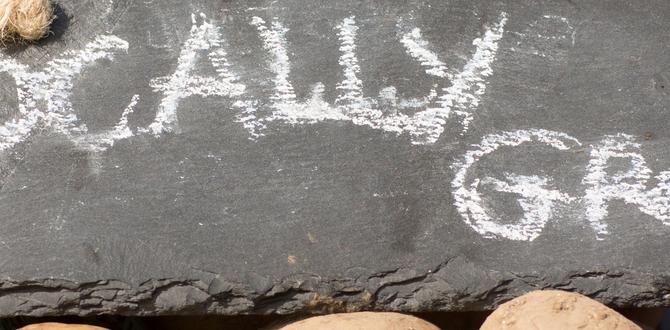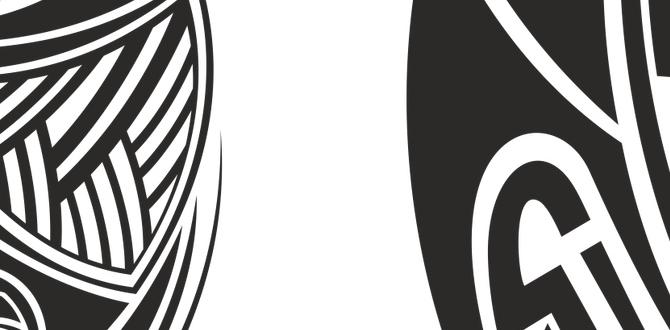Navigating Banff’s local etiquette and tipping is simple! Expect to tip around 15-20% for service staff, similar to other Canadian cities. Be mindful of wildlife, respect trails, and practice Leave No Trace principles to preserve Banff’s natural beauty for everyone.
Welcome to Banff, a place of breathtaking beauty and incredible adventure! As you plan your trip to this Canadian Rockies gem, you might be wondering about the little things that make a big difference – like how to interact respectfully with locals and when and how much to tip.
Don’t worry, it’s much simpler than it seems! Understanding local customs and tipping practices ensures you have a smooth, enjoyable experience and show appreciation for the services you receive. We’ll break it all down, making your journey worry-free and filled with wonderful memories.
From knowing the best spot for a morning coffee to understanding how to thank your tour guide, we’ve got you covered. Let’s dive into everything you need to know about Banff local etiquette and tipping!
Understanding Banff’s Vibe: Respectful Travel in a Natural Paradise
Banff is a unique destination, merging a bustling tourist town with a fragile, stunning natural environment. This creates a special atmosphere where respect for both people and nature is key. Locals in Banff, whether they own a charming boutique, run a cozy café, or guide you on an awe-inspiring hike, are accustomed to visitors from all over the world. They generally appreciate travelers who are open to learning and respecting their home.
The core of Banff’s etiquette revolves around a few simple pillars: politeness, environmental consciousness, and community spirit. Think of it as being a great guest in someone’s incredibly beautiful backyard. A friendly “hello” or “thank you” goes a long way. When you’re out exploring, especially in the national park, a deep respect for wildlife and the delicate ecosystems is paramount. This guide will help you navigate these aspects with confidence, ensuring your visit is not only fun but also mindful.
We’ll cover everything from the unwritten rules of the trail to making sure your generosity is properly expressed when dining out. Knowing these details will enhance your experience and help you feel more connected to the beautiful place you’re visiting.
Wildlife Encounters: Safety First, Always!
One of the most thrilling aspects of visiting Banff is the chance to see incredible wildlife in its natural habitat. However, it’s crucial to remember that these are wild animals and deserve our respect and space. Encounters with animals like elk, bears, deer, and bighorn sheep are common, but they should always be observed from a safe distance. Never feed any wildlife, as this can lead to dangerous habits for the animals and potential harm to humans.
Parks Canada provides excellent guidelines for wildlife safety. They recommend carrying bear spray when hiking and knowing how to use it. If you encounter a bear, the advice is to stay calm, back away slowly, and never run. For elk and deer, especially during rutting season, giving them a wide berth is essential. Remember, maintaining a safe distance is not just for your safety, but also for the well-being of the animals.
- Never feed wildlife: This is illegal and harmful.
- Maintain a safe distance: Use binoculars or a zoom lens for photos.
- Store food securely: Don’t leave food unattended, especially in campsites or picnic areas.
- Be bear aware: Carry bear spray and know how to use it. Make noise while hiking.
- Report sightings: If you see distressed or unusually bold wildlife, report it to Parks Canada.
Trail Etiquette: Sharing the Path
Banff’s extensive network of hiking trails is a major draw. To ensure a pleasant experience for everyone, a few simple trail etiquette rules apply. The most important is to yield to uphill hikers; they are working harder and have the right of way. When passing someone, generally do so on their left and announce yourself as you approach. It’s also polite to step off the trail to let faster hikers pass if there’s a reasonable place to do so.
Keep noise levels down to respect the natural environment and other hikers’ experiences. This also helps in not startling wildlife. If you’re hiking with a dog, ensure they are on a leash (where permitted, regulations vary) and always pick up after them. For group hikes, stay together and be mindful of the pace of the slowest member.
- Uphill hikers have right of way.
- Announce your passing when approaching others.
- Stay on marked trails to protect vegetation.
- Keep noise levels low to appreciate nature and avoid disturbing wildlife.
- Pack out everything you pack in (Leave No Trace).
- Leash pets where required and always clean up after them.
Leave No Trace: Preserving Banff’s Beauty
The “Leave No Trace” principles are fundamental to preserving the incredible environment of Banff National Park. These seven guidelines are designed to minimize your impact so that others can enjoy these wild spaces for generations to come. It’s about making sure that the incredible natural beauty you experience remains intact.
These principles are not just for hardcore adventurers; they apply to every visitor. Whether you’re enjoying a short stroll, a picnic by a lake, or a multi-day trek, following Leave No Trace ensures you’re contributing positively to the park’s conservation. You can learn more about these essential practices on the Leave No Trace Canada website.
- Plan Ahead and Prepare: Know the regulations, pack appropriate gear, and be prepared for changing weather.
- Travel and Camp on Durable Surfaces: Stick to trails and established campsites.
- Dispose of Waste Properly: Pack it in, pack it out. This includes food scraps and toiletries.
- Leave What You Find: Don’t take natural objects or disturb historical artifacts.
- Minimize Campfire Impacts: Use established fire rings where permitted and ensure fires are fully extinguished.
- Respect Wildlife: Observe from a distance, never feed them, and store food securely.
- Be Considerate of Other Visitors: Keep noise levels down and respect others’ enjoyment of the park.
Tipping in Banff: A Guide to Showing Appreciation
Tipping is a customary way to show appreciation for good service in Canada, and Banff is no exception. While it’s not legally mandated in most sectors, it’s a significant part of the income for many service industry workers. Understanding the general expectations will help you budget and feel confident when settling your bills.
The standard tipping culture in Banff aligns with the rest of Canada. Service providers rely on tips to supplement their wages, making it an important aspect of their livelihood. This guide will walk you through the common scenarios so you know exactly what to expect and how to handle it gracefully.
Restaurant and Bar Tipping
When dining out at restaurants or enjoying drinks at a bar, tipping is expected for table service. The general guideline is between 15% and 20% of the pre-tax bill. If the service was exceptional, you might consider tipping a bit more. If the service was significantly poor, you can choose to tip less, but it’s usually advisable to speak to the manager first if you feel the service did not meet expectations.
This percentage applies to your entire bill, before any taxes are added. For self-serve counters at cafes or bakeries where you order and pick up your items yourself, tipping is less common, but often a small tip jar is available if you wish to leave a little extra for good service.
Example: For a bill of $60 before tax, a 15% tip would be $9, and a 20% tip would be $12.
Here’s a quick breakdown for various service types:
| Service Type | Recommended Tip Percentage | Notes |
|---|---|---|
| Restaurant Server (Table Service) | 15-20% | Pre-tax bill. Adjust for exceptional or poor service. |
| Bartender (for drinks mixed) | $1-2 per drink or 15-20% of total tab | If you’re having a full meal at the bar, tip as you would a server. |
| Take-out/Counter Service | Optional (5-10% or change) | Tip jar often available; not generally expected but appreciated. |
Tour and Activity Guides
Banff offers a plethora of incredible tours and activities, from scenic gondola rides and wildlife tours to guided hikes and whitewater rafting. Tipping your guide is a common and appreciated gesture for their knowledge, safety, and effort in making your experience memorable.
For shorter tours or activities, a tip of $5-$10 per person is often suitable. For longer or more involved tours (like full-day adventures or multi-day trips), a tip of 10-20% of the tour cost per person, or a general amount of $20-$50 per person for the guide and driver (if applicable), is appropriate. It’s often best to tip your guide directly at the end of the tour.
If you are part of a larger group, it’s a good idea to discretely hand your tip to the guide or place it in an envelope. Don’t feel obligated to tip unless you genuinely felt the guide provided good service.
- Short Tours (1-3 hours): $5-$10 per person.
- Half-Day Tours (4-6 hours): $10-$20 per person.
- Full-Day or Multi-Day Tours: $20-$50+ per person, or 10-20% of the tour cost.
Accommodation Staff
Tipping practices for hotel staff can vary. For traditional hotel services, consider these guidelines:
- Housekeeping: $2-$5 per day, left in your room daily (sometimes in an envelope). It’s best to leave it each day as the cleaning staff may change.
- Bellhop/Porter: $2-$5 per bag, or $5-$10 for a large amount of luggage.
- Concierge: Not always expected, but if they provide exceptional service (e.g., securing hard-to-get dinner reservations or tickets), a tip of $10-$20 is a nice gesture.
- Room Service: Usually a service charge is included in the bill. If not, tip 15-20% as you would for regular table service.
Taxi and Shuttle Drivers
For transportation services, tipping is customary. If you take a taxi or use a shuttle service within Banff for a standard ride, tipping around 10-15% of the fare is appropriate. If the driver helped with your luggage or provided a particularly informative ride, you can adjust accordingly.
For larger shuttle services that might be part of a tourpackage, the tipping guidelines for tour guides would generally apply if there’s a dedicated driver. Many shuttle services in Banff, especially those connecting to airports like Calgary International Airport (YYC), are professional and appreciate a tip for good service.
When in Doubt, Ask!
If you’re ever unsure about tipping customs for a specific service, don’t hesitate to politely ask. You can ask your hotel’s front desk, your tour operator, or even discreetly ask a local you feel comfortable approaching. Most people are happy to clarify expectations.
Banff Local Etiquette: Beyond Tipping
Respecting local etiquette in Banff extends beyond just tipping. It’s about being a considerate visitor in a place that values its natural heritage and community. These are generally unwritten rules that make everyone’s experience better.
Respecting the Environment
As mentioned with Leave No Trace, the primary etiquette here is environmental stewardship. This means staying on marked trails, not disturbing plants or rocks, and always packing out trash. It’s about leaving the stunning landscapes as beautiful as you found them.
Parks Canada works tirelessly to protect these natural wonders. Visitors play a crucial role in this effort. Even something as simple as not picking wildflowers contributes to the park’s biodiversity. For more information on park regulations and conservation, you can visit the Parks Canada official website.
Community and Culture
Banff is a small town with a strong sense of community. While it’s a popular tourist destination, remember that people live, work, and raise families here. Politeness is always appreciated. A friendly greeting, patience in shops, and respect for local businesses are key.
Many businesses in Banff are locally owned and operated. Supporting them, where possible, is a great way to experience authentic Banff. When engaging with locals, open minds and a respectful attitude will always be well-received.
Noise Levels
In natural areas, keeping noise to a minimum is not only polite but also crucial for wildlife. This includes loud talking, music players without headphones, and excessive shouting. On trails, in parks, and around lakes, a sense of quiet contemplation is often part of the appeal. Even in town, being mindful of noise late at night can be appreciated by residents and fellow travelers.
Shopping and Dining Etiquette
When shopping in Banff’s unique boutiques and souvenir stores, browsing respectfully is standard. If you need assistance, look for a staff member or ask politely. In restaurants, it’s customary to wait to be seated (unless otherwise indicated) and to use your napkin. Don’t be afraid to ask your server for recommendations or if you have dietary restrictions. They are there to help you!
Conclusion
Navigating the etiquette and tipping practices in Banff is straightforward when you approach it with a spirit of respect and consideration. By understanding the common tipping percentages for restaurants, tours, and accommodation, you can confidently show your appreciation for the excellent service you’ll likely encounter. Remember that for many individuals in the tourism and hospitality industry, tips form a crucial part of their income.
Beyond tipping, embracing the local etiquette by respecting the delicate natural environment, observing wildlife from a distance, staying on trails, and being a mindful visitor will significantly enhance your experience and contribute to Banff’s preservation. A friendly demeanor, patience, and a willingness to learn are your best tools for interacting with the local community and fellow travelers.
Banff is a place of unparalleled beauty, and by being an informed and respectful guest, you help ensure its magic endures. Your thoughtful actions, from how you treat the local service staff to how you tread on the land, make a real difference. Enjoy your incredible journey in the Canadian Rockies, knowing you’re equipped with the essential knowledge to make
Frequently Asked Questions
Q1: Is tipping mandatory in Banff?
A1: Tipping is not legally mandatory in Banff or Canada for most services, but it is a strong social custom and a significant part of service industry workers’ income. It’s considered customary to tip for good service.
Q2: How much should I tip for a tour in Banff?
A2: For tours, tip your guide and driver (if applicable) based on the length and nature of the experience. Generally, $5-$10 per person for short tours and $20-$50+ per person (or 10-20% of the cost) for full-day or complex tours is customary.
Q3: Do I need to tip housekeeping staff at my hotel?
A3: Yes, it is customary. A tip of $2-$5 per day for housekeeping is recommended, left daily in your room, preferably in an envelope, to ensure the staff member who cleaned your room receives it.
Q4: What if I had bad service at a restaurant in Banff?
A4: While tipping 15-20% is standard for good service, you can tip less if the service was genuinely poor. Before tipping significantly less, it’s often advisable to speak with the restaurant manager about your experience.
Q5: Should I tip for takeout coffee or food from a counter?
A5: Tipping for counter service is less expected than for table service. However, if you appreciate the service, a small tip (5-10% or just the change) is always welcome if a tip jar is present.
Q6: Is it okay to feed wildlife in Banff National Park?
A6: Absolutely not. Feeding wildlife is illegal and extremely harmful to the animals. It can lead to them becoming dependent on human food, which is often unhealthy for them and can make them more aggressive, posing a danger to both animals and people.
Q7: How should I behave around wildlife in Banff?
A7: Always maintain a safe distance. Never approach, feed, or touch wildlife. If you see an animal, give it plenty of space, stay quiet, and never get between a mother and her young. Carry bear spray when hiking in bear country and know how to use it.




